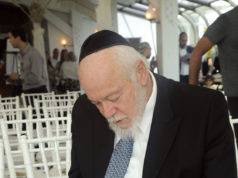
Images of history and conquest flashed through my mind on the long overnight train ride from Paris to Rome. Indeed, which empire was as strong and prominent as Rome? The Romans were the masters of infrastructure; they invented and built aqueducts, roads and bridges. Rome epitomized culture in the classical world, as their language, Latin, branched off into the modern languages that over one billion of the world’s population speak today (including English).
Politically and militarily, the Romans extended their control over all of Italy and eventually created an empire that stretched from England to North Africa and from the Atlantic Ocean to Arabia. I was about to get a glimpse of the most powerful nation in the ancient classical world.
My summer could not have gotten off to a better start. After graduating with a Bachelor’s in Business Administration from Baruch College honors, my parents gave me the approval for a two week trip to Europe. I started my planning immediately and five weeks later my good friend, Josh Arazi and I joined a tour group for a journey throughout Western Europe. We made it our priority to explore our Jewish heritage in every city we visited and were particularly mesmerized by the Roman Jewish community.

The Jewish community in Rome is a hidden gem. Located inz Rome’s Jewish ghetto in Plaza Cenci on Via del Portico d’Ottavia, the ghetto is still called “home” by 14,000 Roman Jews. After having authentic kosher Italian pizza, we ventured to explore the community’s origins. Roman Jews have been living in this neighborhood for 22 centuries, making it one of the only Jewish communities to be present since before the diaspora (galut). How did the Jews get to Rome and why have they remained?
The first Jews who travelled to Rome were Yehuda and Shimon Maccabee, sons and ambassadors to their father Mattityahu, over 2,000 years ago in 161 BC. They came exactly four years after the story of Hanukkah (165 BC) when the Maccabees purified the second temple. Their mission was to form an alliance with the Roman Senate against Antiochus. Following these missions, many Jews decided spontaneously to move to Rome, since the city’s position on the Mediterranean Sea would enhance trade. Jewish merchants traveled to Rome seeking business opportunities and many stayed, causing the Jewish population to burgeon.

The Diaspora began in the year 70 when Titus, Vespasian’s son, tragically destroyed the second temple. Some Jews fled towards Spain and some towards Germany and Eastern Europe; other Jews were led to Rome as slaves by Titus. Interestingly, the Arch of Titus, which contains a relief of the Romans carrying the spoils of the second temple from Jerusalem to Rome, still stands today.
At the time, the majority of Roman Jews were shopkeepers, craftsman and peddlers, but other Jews became poets, physicians and actors. Roman prayers and traditions became known as Nusach Italki or the Italian rite, which essentially is a combination of both Sephardic and Ashkenazi elements.
The Jewish position in Rome began to deteriorate with the adaption of Christianity by Roman emperors. Jews were prohibited to intermarry, own slaves (this prohibition severely restricted the economic life of the Jews since it was so common), hold any esteemed position in the Roman state, build new synagogues and testify against Orthodox Christians in court. In spite of the decrees, a number of well-known scholars emerged: Rabbi Klonymus ben Moshe, Rabbi Yaakov “Gaon” and Rabbi Nathan ben Yechiel of Rome (who wrote the Talmudic dictionary, the Arukh), that have contributed to Jewish learning and development. Roman Jewish traditions followed those practiced in Israel and the liturgical customs started in Rome spread throughout Italy and the rest of the world.
In 1492, the Spanish Inquisition was set into motion by King Ferdinand and Queen Isabella of Spain. The Jews that were expelled from Spain, Sicily, Calabria and Sardinia (they were under Spanish rule) were allowed to live in Rome with permission from Pope Alexander VI Borgia. After him, Pope Paul IV established the ghetto, with the papal edict “Cum Nimis Absurdum,” meaning that he considered it absurd for the Jews to consider themselves equal to Catholics. This accusation was only abolished in 1963. Approximately 4,700 Jews were required to live in the ghetto which was a mere seven acres in size. Jews were forbidden from owning property, barred from universities and forced to wear a yellow hat. Jews became either garment vendors or usurers.
When papal rule was abolished in 1870, the Jewish ghetto was dismantled and Jews were permitted to live anywhere in the city. Some Jews got involved in government while others took higher professions in industry. Tragically, about 20% of Italian Jewry was wiped out during the Holocaust. For sanitary reasons, the ghetto had to be rebuilt and along with it came Tempio Maggiore, or the Great Synagogue. Designed by Vincenzo Costa and Osvaldo Armanni, the Synagogue was built from 1901-1904 on the banks of the Tiber River and overlooks the former ghetto area. The eclectic style of the building makes it stand out even in a city known for notable buildings and structures.
Without a doubt, the synagogue is the most beautiful edifice I’ve ever stepped into. Its height and attention to detail is unprecedented. The aluminum dome is the only squared dome in the city and makes the building easily identifiable even from a distance. The Synagogue is more than just a house of worship; it serves as a cultural and organizational center for la Comunità Ebraica di Roma (the Jewish community of Rome). It houses the Chief Rabbi of Rome and the Jewish Museum as well. The Tempio Maggiore, has recently inaugurated a permanent exhibition that narrates the history of the Jewish presence in Rome, and also displays numerous precious and beautifully crafted sidurim and many fine embroidered coverings for the Sifrei Torot.
Aside from the tasty Italian cuisine, great shopping and awesome sightseeing, Rome is definitely a must-visit destination for its Jewish heritage and culture. Although the Romans dominated the world for six centuries, their empire has since collapsed.
It’s truly amazing to see how a community that has seen so much change in two millennia remains strong. As our tour guide mentioned, the ghetto is perhaps the only place in the city where one cannot only see, but taste and hear history in what is now a thriving Jewish cultural center.
____________
Jack Srour is a freelance writer for publications relating to history, politics and Judaism. He is a graduate of Baruch College Honors with a BBA in Finance and Investments. He currently attends New York University graduate school.



